 June 5, 2014 John E. Ross, KD8IDJ, Editor
| ||||||||
Radio Amateurs Are Principal Players in Effort to Resurrect 36-Year-Old NASA Spacecraft Not even an earthquake kept the ISEE-3 Reboot Project from contacting the 36-year-old International Sun-Earth Explorer 3 spacecraft -- later repurposed, redirected, and renamed the International Cometary Explorer (ICE) -- on May 29 from the Arecibo Observatory in Puerto Rico. The ISEE-3 Reboot Project is a private crowd-funded group of engineers, programmers, and scientists -- including several radio amateurs -- that is trying to fire the old spacecraft's "[W]e have successfully contacted the bird!" Wingo enthused in a June 1 project update. Wingo was at Arecibo Observatory on May 29 when a magnitude 5.8 earthquake rattled the region. Wingo said he and his colleagues were in a safe area when the earthquake occurred. Surviving the earthquake experience aside, Wingo said, the "first miracle" was to command the spacecraft. The second task was to interpret data received back from the spacecraft. The group is hoping to place ISSE-3/ICE into a gravitationally stable spot some 930,000 miles from Earth -- essentially its original orbit -- where it could again study the effects of solar weather on Earth's magnetosphere (the project's slogan is "Make me do science again!"). But, it has a lot of work to do before that is possible. The group has obtained NASA's approval to communicate with the satellite. "One of the major problems that we have...is to update the range to the spacecraft, so that its position, velocity, and trajectory into the Earth-Moon system can be properly plotted," Wingo said. If the team can fire the spacecraft's thrusters this month, ISSE-3/ICE will fly by the moon at an altitude of some 50 km on August 10. Newer digital signal processing (DSP) techniques have made it possible to develop and apply software solutions to address problems that would have required extensive hardware a decade earlier. The project has purchased DSP peripherals from Ettus Research, founded by Matt Ettus, N2MJI, to implement modulator and demodulator programs. More information and updates are available on the ISEE-3 Reboot Project Facebook page and the ISEE3 Returns Community Facebook page. The project also has a ISEE-3 Reboot Project Google+ page. Read more. Ham Radio Helps Get Medical Attention for Mobile Operator in Distress In this era of nearly ubiquitous cell phones, Amateur Radio still offers a way to summon help in an emergency. Ron Smith, N1PXX, of Marshfield, Massachusetts, is living proof. Over Memorial Day weekend, on May 24, Smith, who's in his 60s, broke in on a conversation on the N1ZIZ 146.685 MHz repeater in Plymouth to say he was having a medical problem. "Ron had pulled over on the highway and was having a tough time talking on his radio," said ARRL member John Williams, KB1EVY, the president of the Genesis Amateur Radio Society President, which owns the N1ZIZ repeater. The Genesis ARS is an ARRL Special Service Club. One of the two stations that had been on the repeater, ARRL member Kevin O'Donnell, K1KOD, acknowledged Smith's call and O'Donnell cleared the repeater and requested priority for a medical emergency. "Using both the radio and the cell, Kevin kept talking with Ron. He called 911, [and] gave Ron's location to the State Police," Williams said. O'Donnell let Smith know that an ambulance and police were en route. Smith reported that he saw the police pass by, but the cruiser did not stop ARRL Life Member Dave Ring, N1EA, joined the conversation at this point, and assisted K1KOD. "N1EA was instrumental in making calls to the State police, who got back to Kevin that they had picked up Ron and were heading for South Shore Hospital," Williams recounted. Once Smith was on his way to the hospital, O'Donnell secured the brief emergency net. Williams said that in addition to the Massachusetts State Police, the call brought mutual aid from the Pembroke and Marshfield police departments and ambulance. "Ron is still in the hospital and doing okay," Williams said later. "I talk with him once a day. He is so grateful for what was done for him! I would like to say, 'a job well done' by Kevin, K1KOD; David, N1EA, and Dave, KB1QJX." Read more. -- Thanks to John Williams, KB1EVY, and ARRL Eastern Massachusetts SM Phil Temples, K9HI ARRL Vice Director Agrees to Conditions to Resolve Conflict-of-Interest Situation ARRL Rocky Mountain Vice Director Dwayne Allen, WY7FD, has agreed to stipulations spelled out by the ARRL Board of Directors to address a conflict-of-interest situation arising from the employment of his wife, Katie Allen, WY7KRA, by CQ Communications Inc. Emphasizing that there had been no allegations of impropriety on the part of either Dwayne or Katie Allen, the ARRL Ethics & Elections Committee determined on April 24 that Katie Allen's March 28 appointment as Sales and Marketing Manager for CQ Communications Inc created a conflict of interest for her husband that would disqualify him from continuing to serve as a Vice Director. Katie Allen is the former ARRL Membership Manager and a past volunteer member of the ARRL Public Relations Committee. On April 25, written requests were made by more than five directors to have the board review the Ethics & Elections Committee's decision.
Informal discussion among directors and volunteer officers culminated in a May 22 meeting by teleconference of the full ARRL Board. A majority of board members concurred that a "potential conflict of interest exists under current ARRL By-Laws resulting from the familial relationship" between Dwayne and Katie Allen. With some dissent, the board approved the motion of ARRL Hudson Division Director Mike Lisenco, N2YBB, to manage the potential conflict of interest by calling upon Dwayne Allen to agree to certain stipulations. The agreement allows him to remain in office while isolating him from any ARRL matters that would conflict with his wife's professional activities. Under the agreement, to which Dwayne Allen must adhere as long as his wife is employed by CQ Communications, Allen "will diligently recuse himself" from portions of any Board, Committee, or other ARRL meeting -- including any discussion or votes -- that pertain to ARRL advertising and marketing matters as well as to the ARRL Financial Plan as it relates to advertising and marketing matters. Allen also must recuse himself from "any other discussion or vote where a conflict of interest might arise" and abide by ARRL non-disclosure requirements. According to the resolution, the board "may revisit the issue of a conflict of interest" involving Dwayne Allen, if the Ethics & Elections Committee feels he has failed to comply with the terms of board resolution. The Ethics & Elections Committee's April 24 action marked the first application of a conflict of interest policy, adopted by the Board in July 2006 and contained in Bylaw 45, to a situation involving an elected ARRL official already in office. Southern Florida Gets New Section Manager Jeff Beals, WA4AW, of Loxahatchee, has assumed the office of Southern Florida Section Manager, following the resignation of SM David Fowler, K4DLF, of West Palm Beach. The change was effective on June 1. Fowler announced plans to step down at the end of May, due to recently increased work responsibilities. He had been at the helm in Southern Florida since October 1, 2010. Beals will complete the current term of office, which runs through September 30. SM vacancies between elections are filled by
appointment, and Fowler recommended that Beals succeed him. ARRL Membership and Volunteer Programs Manager Dave Patton, NN1N, consulted with Southeastern Division Director Doug Rehman, K4AC, before making the appointment. An ARRL Life Member, Beals has been licensed since the early 1960s. He has served as an Assistant Section Manager, a District Emergency Coordinator, and a Public Information Officer in the Southern Florida Section. He was the ARRL Southeastern Division Vice Director from 2009 until 2011. A solicitation is underway for nominations for the next 2-year term of office for the Southern Florida Section Manager's position. Nominations are due at ARRL Headquarters by Friday, June 6, at 4 PM Eastern Time. Further details are on the ARRL website. FCC Releases Warning Notices to Several Radio Amateurs The FCC Enforcement Bureau has made public several warning notices issued over the past few months to radio amateurs. A couple of the letters from Special Counsel Laura Smith involved alleged infractions on 20 meters. On April 15, the FCC wrote Larry S. King, KI8NGS, of Owosso, Michigan, regarding failure to properly follow station identification rules on March 21. Smith told King that he was monitored by staffers at the FCC High Frequency Direction Finding Center (HFDFC) "operating your Amateur Radio on 14.313 MHz for 20 minutes without identifying in a timely manner." Smith said the HFDFC used direction-finding equipment to confirm that the transmissions were coming from his location. She said the Center recorded the transmissions. "This incident constitutes a failure to properly transmit your assigned call sign, in violation of the Commission's rules," Smith wrote. "Your On March 31, Smith sent a warning notice to Daniel G.Churovich, N9RSY, of Ripley, Tennessee. "On Friday, March 28, 2014, you were heard by staff at the Commission's High Frequency Direction Finding (HFDF) Center communicating repeatedly on 14.313 MHz with an individual who you identify only as 'cowboy,'" Smith wrote. "This individual failed to provide his call sign during your conversation, a fact that you were aware of as you repeatedly demanded that he provide his name, call sign, and location. Despite being aware of the rule violation on the part of this other individual, you continued communicating with him for an extended period of time." Smith told Churovich that the incident constituted "unauthorized transmissions" in violation of Commission rules that permit radio amateur to engage in two-way communications with "other stations in the Amateur Service." "There is no evidence that the individual with whom you were communicating with on March 28 was an Amateur Radio operator, as he failed to provide his call sign as required by Commission rules," Smith pointed out. Smith also wrote Amateur Radio licensees in Tennessee, Michigan, and Wisconsin on March 31, alleging they all had failed to comply with formal written requests not to use local repeater systems. Smith advised four licensees that the FCC expected them to "abide by the request of the trustee and/or control operator that you stay off [the repeater] -- and any other similar requests to cease operations on any other repeaters by any other repeater licensees, control operators or trustees." Read more. The ARRL June VHF Contest is June 14-16! One of the most popular VHF/UHF events on the contest calendar is the ARRL June VHF Contest, which gets underway at 1800 UTC on Saturday, June 14, and continues until 0259 UTC on Monday, June 16. The object for participants in the US and Canada (and their possessions) is to work stations in as many different 2° x 1° Maidenhead grid squares as possible, using authorized frequencies above 50 MHz. Stations outside the US and Canada (and their
possessions) may only work stations in the US (and its possessions) and Canada. Stations in KH0-9, Alaska, KP1-KP5, CY9 and CY0 count as W/VE stations and may be worked by DX stations for contest credit. You don't need a big station or an elaborate antenna farm to enjoy operating in the June VHF Contest, and you don't have to be a contesting "pro" either. Just get on the air and see what you can work. Six meters -- the so-called "Magic Band" -- often yields surprising openings to various parts of the US and Canada and beyond. DX contacts are even possible on 6 meters.
There are several entry categories, including portable -- for those who enjoy operating low power from a portable power source and using portable antennas -- and rover, for mobile operators who enjoy traveling from one grid square to another to hand out contacts. There's even an FM-only category (50 144, 222, and 446 MHz at a power of 100 W or less). Even with a modest station, it's possible to work hundreds of miles on the VHF bands during a good opening. You can find plans for simple VHF antennas at the Technical Information Service area of the ARRL website, as well as in the "Antennas" chapter of the ARRL Handbook or in the "VHF and UHF Antenna Systems" chapter of the ARRL Antenna Book. Direct any questions via e-mail to the ARRL Contest Branch. Hundreds of Clubs Register their FD 2014 Sites on the ARRL Field Day Locator! ARRL Field Day 2014 is just ahead -- June 28-29. Let the world know about your ARRL Field Day Operation via the ARRL Field Day Locator. It's easy to use. The web page is intended to show only public Field The 2014 Field Day packet is available on the ARRL website. A Spanish version of the Field Day rules is available too. Last year, the League received more than 2500 Field Day entries, representing participation by more than 36,000 radio amateurs who completed in excess of 1.2 million individual contacts on CW, phone, and digital modes. For more information about Field Day 2014, e-mail ARRL Headquarters or call (860) 594-0236. "We Are Ready!" 2014 WX4NHC On-the-Air Station Test a Success The National Hurricane Center's WX4NHC May 31 annual on-the-air Station Test was a success, according to WX4NHC Amateur Radio Assistant Coordinator Julio Ripoll, WD4R. WX4NHC conducts the event each year in preparation for hurricane season, which began June 1 and continues through November. "We had the best annual Station Test that I can remember," Ripoll said this week. "Hopefully we will not have to activate for a hurricane this
season, but it is good to know that our equipment worked well, in case the need arises. We are ready, not just for us in sunny South Florida, but for everyone along the US East Coast and in the Caribbean. Thank you for your support." WX4NHC made 308 contacts during 9 hours of operation, with contacts ranging from local VHF/UHF stations in South Florida and the Florida Keys to as far away as Guam. Surface reports were received from 25 states as well as from several countries, including Bermuda, Canada, Cuba, Curacao, Costa Rica, Dominican Republic, Haiti, Honduras, Mexico, Puerto Rico, and Venezuela, Ripoll said. WX4NHC even spoke with FEMA Administrator Craig Fugate, KK4INZ, via EchoLink. Ripoll said it helped that one of the WX4NHC operators was Dominican Republic native Julio Henriquez, AD4Z, an internationally
recognized DXer and contester. Henriquez will compete in the World Radiosport Team Championship (WRTC-2014) next month in New England. WX4NHC was tested on various bands and modes. The Center also checked out its Winlink, EchoLink, IRLP, and APRS capabilities, among other communication systems. All radio equipment and antennas performed well, and WX4NHC logged "the most contacts made during this event in memory," Ripoll said, despite poor HF propagation and the fact that WX4NHC also was testing equipment, training operators on new modes, and "tweaking" its computer software. Ripoll expressed appreciation to SKYWARN volunteers and to ARRL Emergency Preparations Manager Mike Corey KI1U, for supporting the annual exercise. Read more. ARRL Foundation Awards 79 Scholarships in 2014 The ARRL Foundation Board of Directors has announced the scholarship recipients for 2014. Each year, the Foundation's Directors have the honor and privilege of selecting Amateur Radio operators who will receive monetary assistance to further their undergraduate or graduate education. For 2014, the Foundation awarded 79 annual scholarships through 58 funds to young Amateur Radio operators, valued at $106,250.
The application period for ARRL Foundation Scholarships opens October 1 each year and closes on January 31 at midnight the following year, with awards announced in May. Descriptions of all the available scholarships and selection criteria, as well as application instructions and forms are on the ARRL Foundation web pages. Centennial Operations Now in Alabama, Louisiana to Shift States on June 11 (UTC) The ARRL Centennial W1AW WAS operations taking place throughout 2014 from each of the 50 states are now in Alabama and Louisiana. They will relocate on Wednesday, June 11 (Tuesday, June 10 in US time zones) to Arkansas (W1AW/5) and Minnesota (W1AW/0). During 2014 W1AW will be on the air from every state (at least twice) and most US territories, and it will be easy to work all states solely by contacting W1AW portable operations. Some schedule changes have been made, and the W1AW WAS list has been updated to reflect these. To celebrate the 100th anniversary of the ARRL, the ARRL Centennial QSO Party kicked off January 1 for a year-long operating event in Working W1AW/x from each state is worth 5 points per mode/contact, even when working the same state during its second week of activity. To earn the "Worked all States with W1AW Award," work W1AW operating portable from all 50 states. (Working W1AW or W100AW in Connecticut does not count for Connecticut, however. For award credit, participants must work W1AW/1 in Connecticut.) A W1AW WAS certificate and plaque will be available. The ARRL has posted an ARRL Centennial QSO Party leader board that participants can use to determine how many points they have accumulated in the Centennial QSO Party and in the W1AW WAS operations. Log in using your Logbook of The World (LoTW) user name and password, and your position will appear at the top of the leader boards. Results are updated daily, based on contacts entered into LoTW. D-Day Special Event Stations to be Active Several special event stations will be on the air to commemorate the 70th anniversary of D-Day -- the Allied invasion of the Normandy Coast of France in World War II -- on June 6, 2014 (this list is not comprehensive). In France, TM70JUN will be on the air from June 6 until June 20. Modes will be SSB, CW, PSK, RTTY, and JT65 on HF and 6 meters. Special event station TM70BMC will operate from Mont Canisy June 5-8.
The TM70UTAH operation on HF and VHF, SSB, CW, and digital modes is underway and will conclude June 12. W9D will be active on SSB, CW, and AM on HF through 6 meters June 6-8 from the First Division War Museum in Winfield, Illinois. The Riverway Amateur Radio Society will sponsor special event station GB70DDL from June 1 until June 28 from the Sea Cadet headquarters in Stafford, England. VC3JUNO from Canada will be on the air from June 6 until July 31 to commemorate the 70th anniversary of D-Day; "Juno" was the code name for the beach where Canadian forces landed. F/PA70DDAY will be from the "Nan Green Sector" of Juno Beach in Normandy. This operation is already underway and scheduled to conclude June 9. Operation will be on 80, 40, and 20 meters, SSB. F/ON6JUN/p will take place June 4-8 from Ranville in Normandy. On June 6, 1944, 160,000 Allied troops landed along a 50-mile stretch of heavily-fortified French coastline to fight Nazi Germany on the Normandy beaches. The attack was a major turning point in the war. More than 5000 ships and 13,000 aircraft supported the invasion, in which more than 9000 Allied soldiers were killed or wounded. Huntsville to Host GAREC 2014 The 2014 Global Amateur Radio Emergency Communications Conference (GAREC-2014) will take place Thursday and Friday, August 14-15, in conjunction with the Huntsville Hamfest in Alabama. The Huntsville Hamfest, August 16-17 at the Von Braun Convention Center, is the Southeastern Division Convention and a Regional ARRL Centennial Event. The GAREC conference will focus on the application of advanced The conference agenda and programs are still under development. The first Global Amateur Radio Emergency Communications Conference in 2005 was organized on the initiative of Seppo Sisatto, OH1VR, and held in Tampere, Finland. Following the success of that event and increased interest in international and regional cooperation on emergency communication, GAREC conferences have become established annual events. For each conference, an organizing committee works with a local host, and International Amateur Radio Union (IARU) representatives participate in the event. Register for GAREC 2014 on the ARRL website. Contact Greg Sarratt, W4OZK, for additional information. Read more. King Juan Carlos of Spain, EA0JC, to Step Down King of Spain Juan Carlos de Borbón, EA0JC, announced June 2 that he will abdicate his throne after 39 years in favor of his son, Crown Prince Felipe. The king turned 76 in January. Prince Feli He holds a degree in law and has earned a master's in international relations from Georgetown University. King Juan Carlos ascended the throne upon the death of dictator Francisco Franco in 1975, winning the respect of his subjects by guiding the country into an era of democratic rule. IARU Region 3 Directors to Attend Asia-Pacific Telecommunity Meeting International Amateur Radio Union (IARU) Region 3 directors plan to attend the third meeting of the Asia-Pacific Telecommunity (APT) Conference Preparatory Group for World Radiocommunication Conference 2015 (WRC-15), June 9-13 in Brisbane, Australia. APT will organize the meeting, which is being hosted by the Australian Communications and Media Authority and supported by the Australian Department of Communications.
"The IARU is able to input an Amateur Radio view on matters being discussed and decided," said Jim Linton, VK3PC, who chairs the IARU Region 3 Disaster Communications Committee. Read more. -- Thanks to Jim Linton, VK3PC Honor Roll DXer, Assistant ARRL Director H.O. Townsend, K5CX, SK ARRL Life Member Howard O. "H.O." Townsend, K5CX (ex-WA5MLT), of Naples, Texas, died on May 30. He was 69. Townsend was a retired software designer and a US Army veteran.
An Honor Roll DXer, West Gulf Division Assistant Director, and past Section Emergency Coordinator, Townsend participated in the W1AW/5 Centennial QSO Party operation from Texas (12 meters SSB). ARRL West Gulf Division Director Dr David Woolweaver, K5RAV, said Townsend's obituary fails to capture Townsend's importance as an advisor to him and to past West Gulf directors. "He was active in several clubs and continually promoted Amateur Radio," Woolweaver said. "He leaves a big hole in the Amateur Radio community." The family has requested memorial donations to the ARRL Education and Technology Fund (ETP), 225 Main St, Newington, CT 06111-1494. A Century of Amateur Radio and the ARRL A VHF-and-above ham license had been discussed and debated for years. When the FCC changed the Amateur Radio license structure on July 1, 1951, it established the Technician class license. It required passing a Morse code test of 5 WPM; the written exam was the same as the General class test. The purpose of the Technician license was to allow electronics-minded people to get on the air easily to experiment on 220 MHz and higher frequencies, at a time when major advances were taking place on those amateur bands. As it turned out, the number of experimenters in the Technician ranks was fairly small; most Technician licensees wanted to be communicators. The FCC responded to this fact by progressively granting additional operating privileges to Techs. In 1955, Technicians got privileges on 6 meters; in 1959, they obtained
privileges on 145 to 147 MHz; in 1972, 145 to 148 MHz; in 1978, all privileges above 50 MHz, and in 1987, a small subband for 10 meter SSB. In 2000, Technicians who had passed a 5 WPM code test were allowed to operate CW on the Novice segments of 80, 40, and 15 meters, and to use all modes on 10 meters. Experimentation and advances in the state of the Amateur Radio art on VHF-and-above remained, for the most part, the domain of higher-class licensees, although a fair percentage of Technicians contributed too. As communicators, Technician licensees have proven to be a great asset to Amateur Radio during disasters and emergencies, for which the VHF/UHF bands have become primary. The proliferation of mobile stations on VHF and above also has played an important role in providing public service and emergency communication support. As the FCC intended, both Technician and Novice licensees spurred the growth of Amateur Radio in the US. In 1950 there were about 90,000 hams; by 1956, there were more than 140,000; by 1963, more than 250,000, and today there are some 723,000 licensees. Joe Speroni, AH0A, has compiled ham radio licensing statistics from June 1997 to the present. -- Al Brogdon, W1AB In Brief...
The K7RA Solar Update Tad Cook, K7RA, Seattle, reports: Boy, has solar activity declined this week, and the near-term outlook has dimmed as well. Average daily sunspot numbers for May 29 through June 4 dropped from 103.3 (for the previous 7 days) to just 60.1. Average daily solar flux declined from 110.3 to 104.1. Last week the predicted solar flux for Field Day weekend was 108 and 110, and on June 2 that changed to 95 and 110. Predicted solar flux for the near term is 105 on June 5-7, 110 for June Predicted planetary A index is 8, 5, 8, 10 and 8 for June 5-9, 5 for June 10-17, 8 for June 18-19, 5 for June 20-24, 8 for June 25-26, 5 on June 27, 8 on June 28, 5 on June 29, and 8 on June 30. This weekly "Solar Update" in The ARRL Letter is a preview of the "Propagation Bulletin" issued each Friday. The latest bulletin and an archive of past propagation bulletins is on the ARRL website. In tomorrow's bulletin look for an updated forecast and reports from readers, including a dramatic recording of unusual backscatter on 10 meters made by Eric Guzman, NP3A, during the WPX CW Contest. Send me your reports and observations. Just Ahead in Radiosport
Visit the Contest Calendar for details. Upcoming ARRL Section, State and Division Conventions and Events
Find conventions and hamfests in your area. ARRL -- Your One-Stop Resource for
Subscribe to...
Free of charge to ARRL members...
| ||||||||
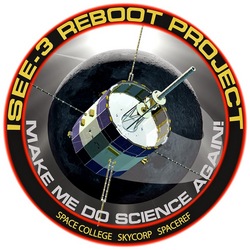 engines to redirect its path. And that has to happen by June 17, according to Dennis Wingo, KD4ETA, one of the team members and the CEO of California-based
engines to redirect its path. And that has to happen by June 17, according to Dennis Wingo, KD4ETA, one of the team members and the CEO of California-based 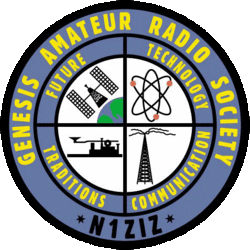 asked for his cell phone number. With some difficulty -- and with assistance from the second station, David Blackford, KB1QJX, who was visiting the Cape Cod area from Connecticut -- O'Donnell was able to call Smith and establish that he needed prompt medical attention.
asked for his cell phone number. With some difficulty -- and with assistance from the second station, David Blackford, KB1QJX, who was visiting the Cape Cod area from Connecticut -- O'Donnell was able to call Smith and establish that he needed prompt medical attention.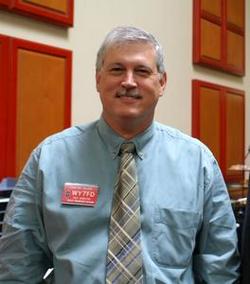
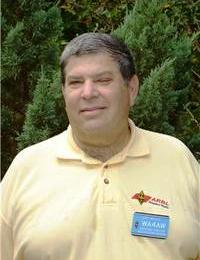
 operation as described is contrary to the basis and purpose of the Amateur Radio Service, as set out in Section 97.1 and is a violation of Section 97.11(a) of the Commission's rules."
operation as described is contrary to the basis and purpose of the Amateur Radio Service, as set out in Section 97.1 and is a violation of Section 97.11(a) of the Commission's rules."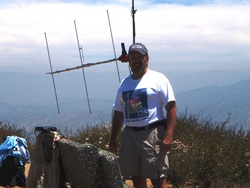
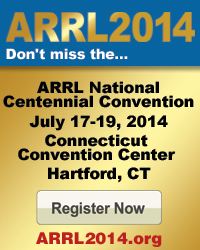
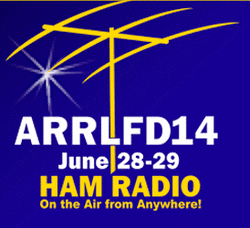 Day sites that members of the public and media can visit. So far, some 800 clubs have registered their Field Day information. Registration is optional, but it is a good way to help generate interest in a group's participation. If you're planning to operate from a private and/or residential location, do not add your site to the map.
Day sites that members of the public and media can visit. So far, some 800 clubs have registered their Field Day information. Registration is optional, but it is a good way to help generate interest in a group's participation. If you're planning to operate from a private and/or residential location, do not add your site to the map.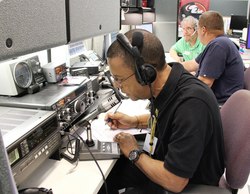
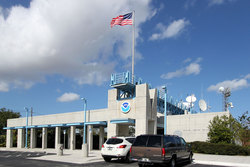
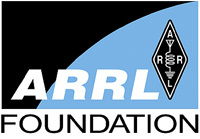 In addition, the Foundation Board
In addition, the Foundation Board 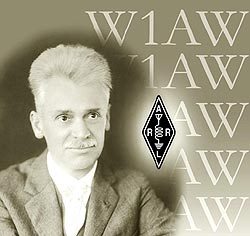 which participants can accumulate points and win awards. The event is open to all, although only ARRL members and appointees, elected officials, HQ staff and W1AW are worth ARRL Centennial QSO Party
which participants can accumulate points and win awards. The event is open to all, although only ARRL members and appointees, elected officials, HQ staff and W1AW are worth ARRL Centennial QSO Party 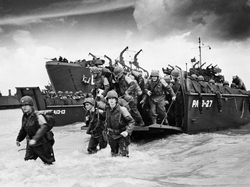 TM70DD will be active from June 5 until June 19.
TM70DD will be active from June 5 until June 19.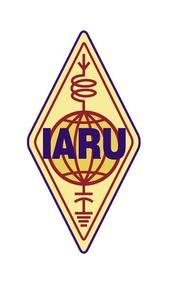 technologies in emergency communication. All public service-minded Amateurs Radio operators and emergency communication professionals are welcome. This will mark the second time a GAREC Conference has been held in the US.
technologies in emergency communication. All public service-minded Amateurs Radio operators and emergency communication professionals are welcome. This will mark the second time a GAREC Conference has been held in the US. pe, a former Olympic yachtsman, is the father of two daughters. He's married to Letizia Ortiz, a former TV news anchor. In addition to Spanish, he is fluent in English, French, and Catalan and studied in Canada for a year.
pe, a former Olympic yachtsman, is the father of two daughters. He's married to Letizia Ortiz, a former TV news anchor. In addition to Spanish, he is fluent in English, French, and Catalan and studied in Canada for a year.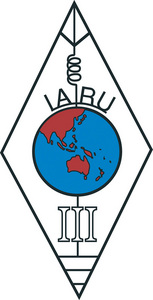 Among other things, attendees will consider the results of International Telecommunication Union-Radiocommunication Sector (
Among other things, attendees will consider the results of International Telecommunication Union-Radiocommunication Sector (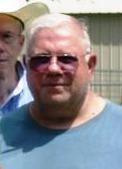

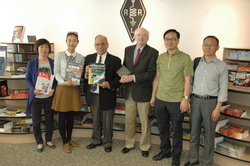 Chinese Publishing Representatives Visit ARRL Headquarters: Representatives of China's Posts and Telecommunications Press (
Chinese Publishing Representatives Visit ARRL Headquarters: Representatives of China's Posts and Telecommunications Press (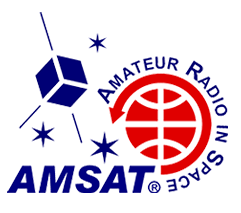 First Call for 2014 AMSAT Space Symposium Papers:
First Call for 2014 AMSAT Space Symposium Papers: 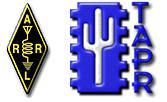 Hams Invited to Submit Papers for Digital Communications Conference: Radio amateurs are invited to submit technical papers for presentation at the 33rd annual ARRL and TAPR Digital Communications Conference (
Hams Invited to Submit Papers for Digital Communications Conference: Radio amateurs are invited to submit technical papers for presentation at the 33rd annual ARRL and TAPR Digital Communications Conference (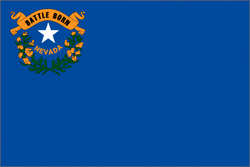 Nevada Governor Declares June as "Nevada Amateur Radio Month:" Nevada Governor Brian Sandoval has declared June "Nevada Amateur Radio Month." In a May 12 gubernatorial proclamation, Sandoval noted Nevada's sesquicentennial and the ARRL centennial this year and cited the public service participation of Nevada's nearly 7000 radio amateurs. "Silver State hams demonstrate their creative, technological, and emergency operational prowess in public view all across Nevada during the annual Field Day," the governor added.
Nevada Governor Declares June as "Nevada Amateur Radio Month:" Nevada Governor Brian Sandoval has declared June "Nevada Amateur Radio Month." In a May 12 gubernatorial proclamation, Sandoval noted Nevada's sesquicentennial and the ARRL centennial this year and cited the public service participation of Nevada's nearly 7000 radio amateurs. "Silver State hams demonstrate their creative, technological, and emergency operational prowess in public view all across Nevada during the annual Field Day," the governor added. DX-World, Northern California DX Club Announce New Partnership: DX-World.net has announced a new partnership with
DX-World, Northern California DX Club Announce New Partnership: DX-World.net has announced a new partnership with 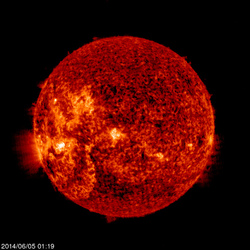 8, 115 for June 9-10, 110 for June 11-12, 120 for June 13-15, 115 for June 16-17, 110 for June 18-20, 105 for June 21-23, then dipping to 95 for June 26-28 before peaking at 120 for July 6-12.
8, 115 for June 9-10, 110 for June 11-12, 120 for June 13-15, 115 for June 16-17, 110 for June 18-20, 105 for June 21-23, then dipping to 95 for June 26-28 before peaking at 120 for July 6-12.







